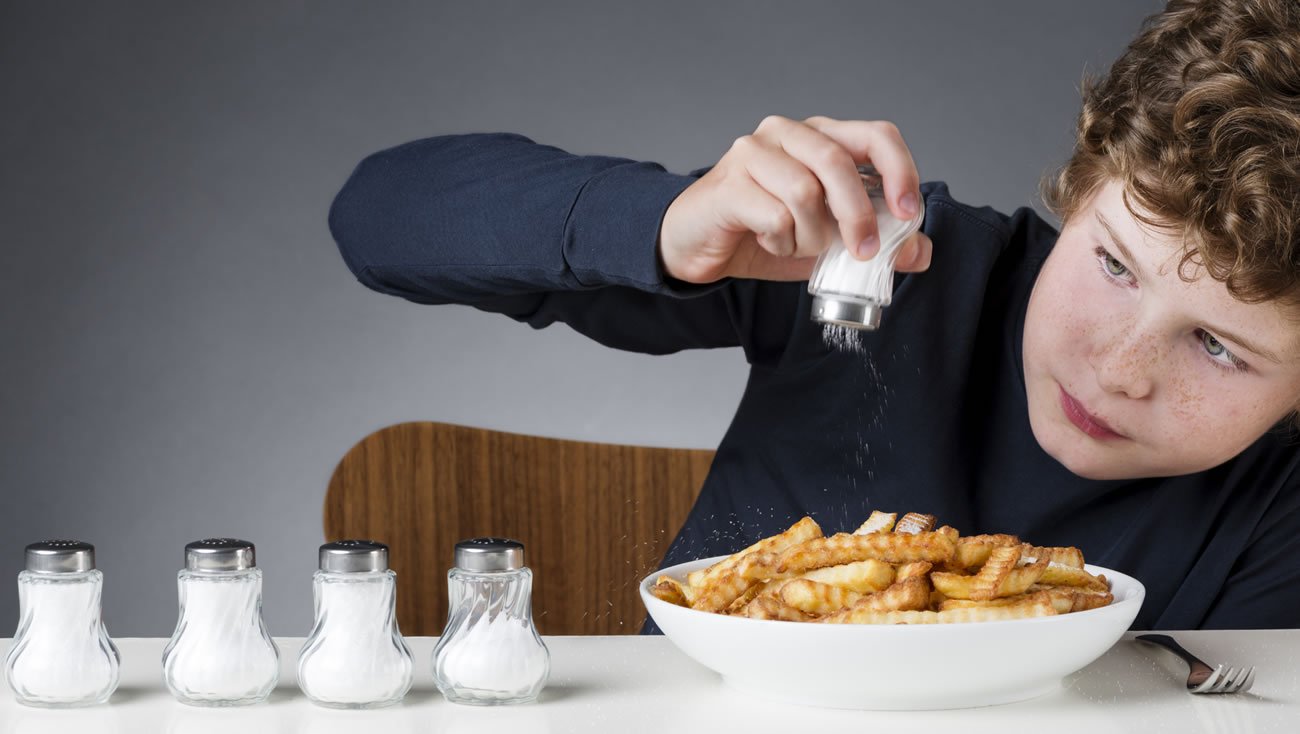Are salt substitutes safe?

Are salt substitutes safe? | Potassium chloride
Most salt substitutes contain potassium chloride. Potassium chloride tastes somewhat like sodium chloride (salt), though some people complain of a metallic taste.
But be cautious about salt substitutes with potassium chloride.
They can be dangerous if you have certain conditions, particularly diminished kidney function, which is fairly common among older people in the U.S., or if you take certain hypertension medications, including ACE inhibitors and potassium-sparing diuretics.
So yes, the very same people who might be looking for salt substitutes – those with hypertension (high blood pressure) – are the ones who probably ought not to be using salt substitutes with potassium chloride.
Potassium and blood pressure
It is true, though, that potassium can help lower blood pressure. The Pritikin Eating Plan, full of foods that are naturally rich in potassium like potatoes, beans, yogurt, and many fruits and vegetables (these foods are also very low in salt), has been documented to significantly lower blood pressure and reduce the need for hypertension medications.
Plus, with healthy diets like Pritikin, you’re getting not only potassium but all the other minerals and phytonutrients science has found may help prevent or reduce high blood pressure. Additional potassium in supplement form is not necessary, and, as stated earlier, may be harmful.
Are salt substitutes safe? | Monosodium glutamate (MSG)
The media and others often portray MSG as the culinary bogeyman, but scientists have found that for most people, monosodium glutamate, or MSG, is a safe salt substitute. The seasoning Accent, on supermarket shelves nationwide, contains MSG.
Some people do “react” to MSG, experiencing some unpleasant short-term symptoms once called the “Chinese Restaurant Syndrome” (and now the more politically correct “MSG Symptom Complex”). Symptoms include nausea, tightness in the chest, and/or a burning sensation in the skin around the neck, face, and upper torso.
But these symptoms occur only in a small percentage of people, and usually only after they have consumed large amounts of MSG with little or no carbohydrate or protein, for example, in a brothy soup,” states Kimberly Gomer, MS, RD, LDN, Director of Nutrition and Educator at the Pritikin Center.
MSG | What science says
“Bottom line: There is no evidence that consuming MSG in moderation has any long-lasting negative impact on health or longevity. This is true even in people who occasionally experience the MSG Symptom Complex,” sums up Gomer, author of a course on MSG approved by the American Dietetic Association for Continuing Professional Education (CPE) credit for registered dietitians.
The science on MSG does an excellent job of making us step back and ask, “Am I putting the blame for my symptoms on the right thing?” That’s because every controlled clinical trial has shown that the vast majority of people who thought they reacted badly to even small amounts of MSG responded in exactly the same way to a placebo. “These trials suggest that most people’s reactions are likely due to something else in the food, not the MSG itself,” says Gomer.
“In every single trial in which the amount of MSG was modest, and in which the food it was added to contained some type of protein and/or carbohydrate, the reaction was the same, with or without the MSG,” observes Gomer.
What’s a safe amount of MSG?
As with many things in life, moderation is a good idea. What’s a moderate and safe amount of MSG? “Almost everyone can add up to a teaspoon of MSG to their daily diet and still safely stay within the Pritikin Eating Plan guidelines for sodium of less than 1,200 to 1,500 mg daily, depending on age and blood pressure,” advises Gomer.
Umami
MSG, known by chefs as giving food umami, a savory “fifth taste” flavor, has significantly less sodium than salt. A half teaspoon of salt has about 1,150 mg of sodium. A half teaspoon of MSG has only about 320 mg of sodium.
And researchers have long known that sodium without chloride, found in such compounds as sodium bicarbonate and sodium citrate as well as monosodium glutamate, is far less likely to raise blood pressure than sodium with chloride (salt). But monosodium glutamate is the only one that imparts savory, salt-like flavor to food.
When you think about it, there’s a dangerous flip side to not using MSG. “Most people do not realize this, but when they ask for no MSG in a Chinese or Asian-style restaurant, it all but guarantees that the chef will be using more salt and salt-rich ingredients like soy sauce,” warns Gomer.
Salt lick nation
And certainly, the last thing we need is more salt. The average American adult consumes about 9 to 10 grams of salt, or about 3,500 to 4,000 mg of sodium daily, which contributes directly to our nation’s epidemic rates of hypertension and life-threatening conditions like heart attacks and strokes.
The Centers for Disease Control and Prevention recommends for most Americans a sodium intake of no more than 1,500 milligrams daily. So do other leading health organizations, including the American Heart Association.
Is MSG served at the Pritikin Longevity Center?
At Pritikin, salt substitutes, including MSG, are not served because one of the health resort’s goals is helping people diminish their “salt tooth.” Both excess salt and salt substitutes can dull the taste buds. Removing them gives our palates the opportunity to discover – and appreciate – the subtler flavors of natural foods and fresh herbs. (See “The safest salt-free approach” below.)
Are salt substitutes safe? | Potassium salt + MSG
Very unsafe is using both potassium chloride salt substitutes and MSG. “A combination of potassium chloride and monosodium glutamate would challenge the body with both sodium and chloride, and may be nearly as bad as adding too much salt to your diet,” cautions Gomer. Bottom line: Use one or the other in moderation, but not both.
The safest salt-free approach
Ideally, the best approach is to open up your palate to new flavors that don’t depend on salt or salt substitutes, as the award-winning chefs at the Pritikin Longevity Center teach in their healthy cooking classes.

Learn More About Pritikin
-
New flavors
Guests at the health resort learn how to experiment with savory new herbs and spices, like lemon zest, fresh garlic, fresh herbs like oregano, flavored vinegars, and salt-free seasoning blends created by the chefs in Pritikin’s kitchen.
-
New taste buds
Another big plus is simply eating in the dining room at Pritikin for a one-week vacation or longer. The preference for salt is learned, which means if you’re placed in the right environment, your preference for salt can be unlearned. The right environment is one like Pritikin, where there are no salt shakers in the kitchen or dining room. Here, your palate has a chance to shed its salt addiction.
Your taste buds are reawakened. Within days, they start enjoying new flavors and flavor combinations.In fact, after just one week at Pritikin, guests often tell the staff, “I don’t even like the taste of salt anymore. It’s too harsh.”
“That’s music to our ears,” smiles Pritikin’s Director of Nutrition Kimberly Gomer, MS, RD, “because losing the taste for salt means you’ll likely lose many serious risks to your health.”
-
New life
When salt is dramatically reduced, so is the threat of many ailments linked with high-salt consumption – not only hypertension, which nearly 90% of Americans will develop in their lifetime, but also heart attacks, strokes, renal failure, senility, erectile dysfunction, stomach cancer, kidney stones, and osteoporosis (brittle bones).
-
New lifestyle
“So we applaud you for looking for safe salt substitutes,” sums up Gomer. “But certainly, don’t forget that a healthy lifestyle involves more than just cutting down on salt.”
Total body tune-up
“At Pritikin,” explains Gomer, “the guests enter a world that focuses on all the key variables that promote long-lasting good health. They include daily physical activity and a diet full of nutrient-rich, whole foods. Pritikin teaches a lifestyle that research has shown can help prevent and reverse virtually all the diseases endemic in modern society, including excess weight, type 2 diabetes, metabolic syndrome, coronary artery disease, and some common types of cancer, as well as hypertension.”
“It’s the whole package that leads to the good health we all want for a good life. People have been learning it at the Pritikin Longevity Center for more than 40 years.”
As The New York Times wrote, Pritikin is the “granddaddy of health-based wellness spas.”
